Material for adapting the lens from the Soviet telescope ZT4-20x50 specifically for Radozhiva prepared a reader nicknamed Iskander.
foreword
The pipe ZT4-20x50 was given to me as a gift more than 20 years ago. It consists of three steps. The lens is a glued two-lens achromat, seated in a plastic first stage, fixed with a plastic ring with a thread, with a wrap-on anti-skeleton hood. The second stage is a metal tube, which was tightly included in the first, but for 20 years of operation it was very loose. The third stage - also metal, contains a wrapping system of three optical elements. It ends with a thread for fitting an eyepiece with a focusing device in the form of a wide corrugated ring.
The scale of the tragedy
Due to the general looseness of the system, after reading the magazines "Science and Life", I decided to build a telescope out of it. I removed all the lenses of the turning system from the third stage, cut off the excess, pushed the third stage into the second, gluing it tightly with epoxy. Focusing it at infinity, I also filled the compound of the first and second stages with epoxy. The pipe turned out to be shorter in length, rigid, monolithic, but gave an inverted image. An additional projection eyepiece corrected these shortcomings, along the way bringing the magnification to 60X. In this form, but without a projection eyepiece, I photographed the Moon, attaching a Canon soap dish with a XNUMXx zoom to the eyepiece.
Newtonian classic
Realizing that the extra optical elements in the form of an eyepiece and a 13-lens soap dish are unlikely to improve the picture quality, I decided to test this lens in the "Newtonian focus", when the image from the lens directly hits the matrix. In my opinion, this is the perfect solution. Looking ahead, I will say that the real aperture such a system is several times higher than the aperture of most modern photographic lenses ... corny because of the small number of lenses. I suspect that aperture modern multi-lenses are VERY overpriced, despite the ultra-modern antireflection coatings.
Achromat + DSLR, and between them - plastic.
I didn't want to spoil, cut, sharpen the original pipe, so that it would be possible to return everything to its place. So I started sculpting the lens barrel from scratch. Since the lens diameter is 52 mm, I took a piece of PVC pipe with an outer diameter of 50 mm (white) as the inner pipe, it is quite rigid, with thick walls. I glued a flange to it, to it - an M42-EOS mount adapter with a chip (of course, at this stage, at least roughly alignment must be observed!). At the first test stages I used Globus nitroclay, but the adapter was constantly torn off, but the glue remnants were easily cleaned off. At the final stage, I glued the adapter with silicone sealant, and for reliability I advise superglue or screws.
The outer tube is my special love and sex. To begin with, I took a plumbing coupling (it is produced in gray with two rubber seals, an inner diameter of 50 mm, a length of about 90 mm), took out the oil seals. To this clutch I used a semblance of a frame with a lens. To make it clear, I did this to evaluate the real tube stick out and the minimum focusing distance. Realizing that the length was not enough, I bought another pipe of the same format called "expansion coupling". After cutting off all the excess from it, about 150 mm remained, after gluing these pipes - the total length of the outer pipe turned out to be about 220 mm. I focused with simple translational movements of the outer tube. The first pictures showed that there is no contrast, and the pipes must be blackened inside. The inner tube was painted with silicone matte black paint. The picture has changed dramatically! With the blackening of the outer pipe, I had big problems, even the paint of the marker starts rolling and sticking during friction, so I advise you not to paint, but immediately select the color blacker.
Helicoid - Easy!
When cutting the same pipe, I made a marking in a spiral, with a step of about 30 mm, cut it with a hacksaw for metal, cleaned it with sandpaper and put on the resulting “serpentine” on the outer pipe. Since the “serpentine” extended and increased in diameter, an even spiral groove was formed with a width of about 4 mm and a depth of 2 mm. Then he poured superglue into the groove.
After I made a leash attached to the inner pipe, at its end there is a small pin that fits into the groove of the helicoid. It can be replaced with a metal bolt in the future.
I chose the position of the leash, focusing in the rear position on the moon, and then moved it a couple of millimeters back for a reserve, and glued it, as a result, I got a small jump to infinity.
Installation Features:
- Focal Length: 330mm
- Lens Diameter: 50mm
- Relative Hole: 6,6
- Total length from the bayonet plane: 300 - 383 mm
- Focusing Outer Tube: 83 mm
- Focusing distance: from 3 meters to infinity
- When focusing from MDF to infinity, the outer tube makes 2 turns
- Focusing through the viewfinder is inaccurate, so it’s better to focus through Live View
Sample photos:
You will find more reviews from readers of Radozhiva here.

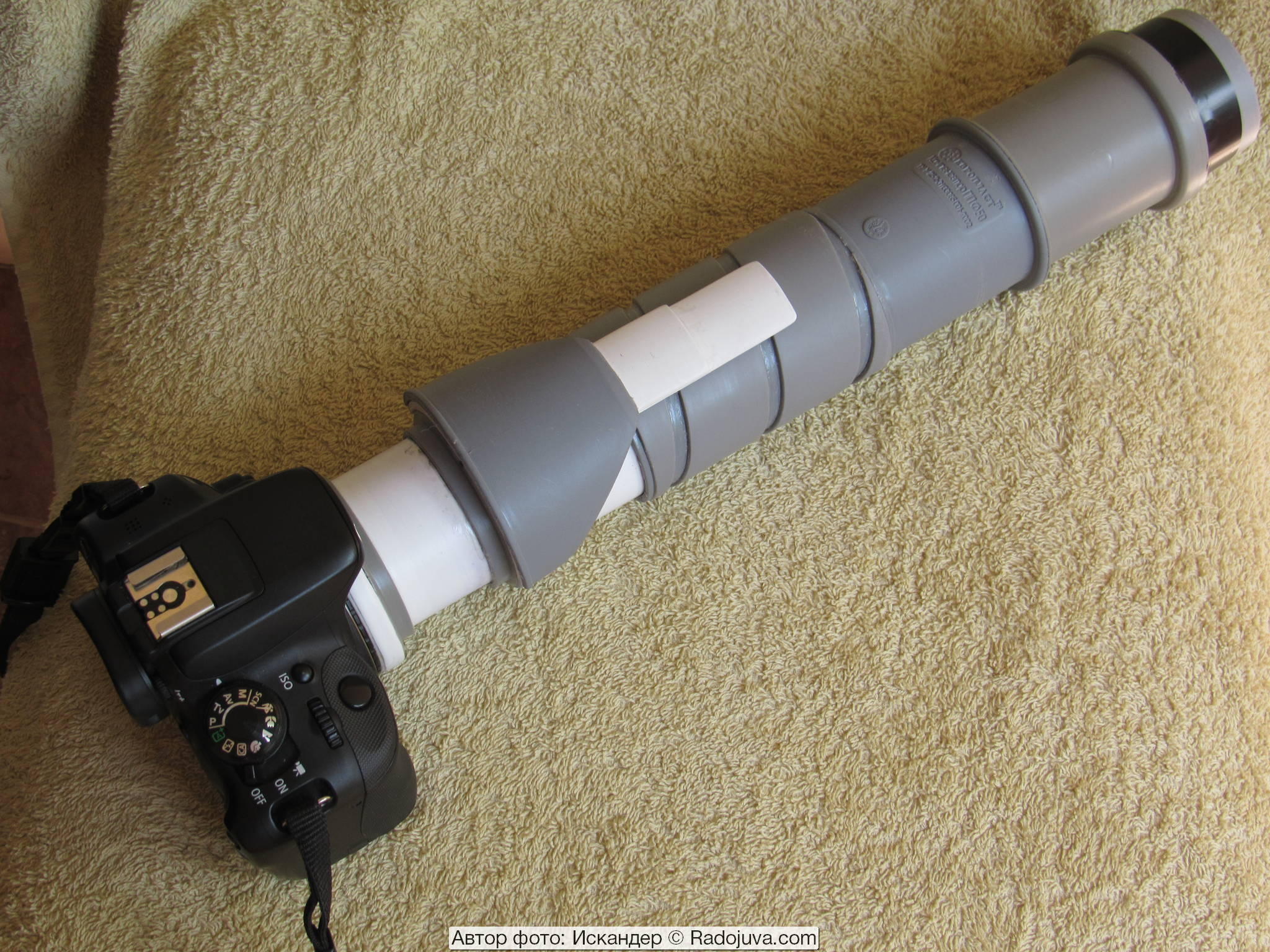
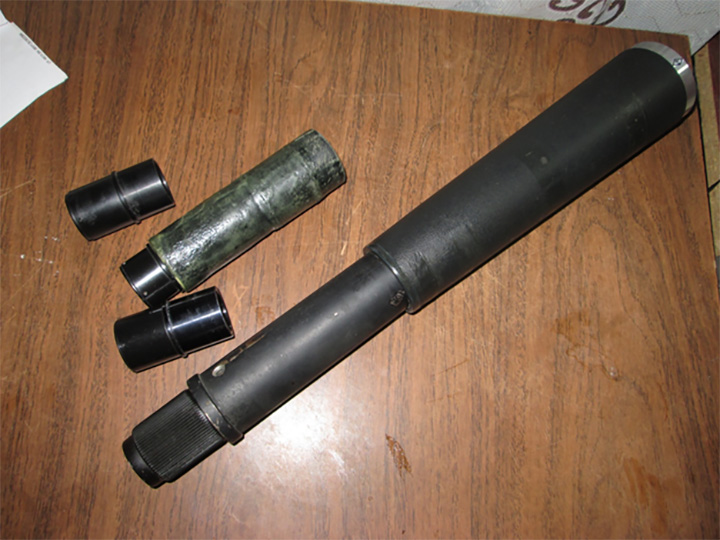
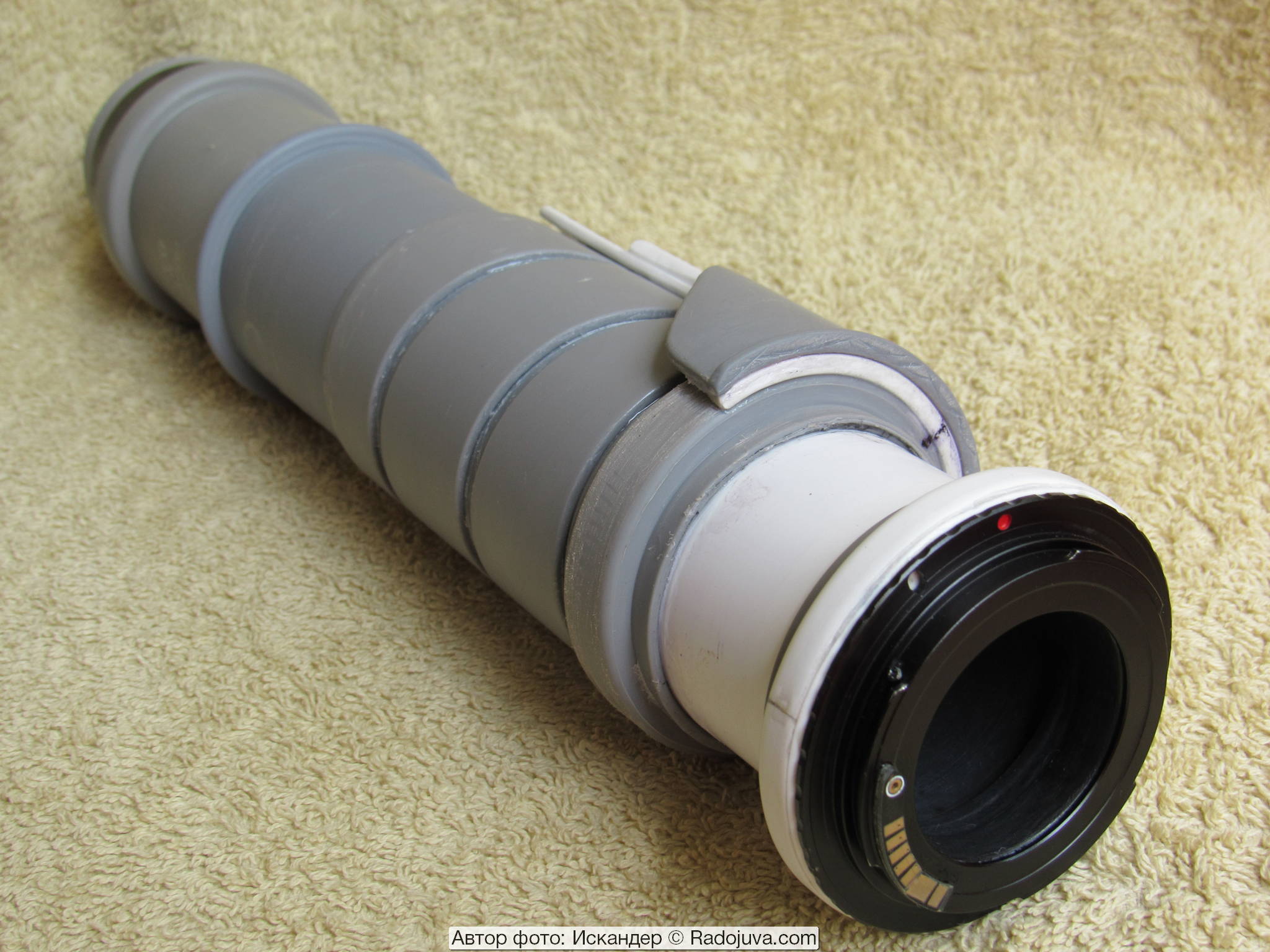
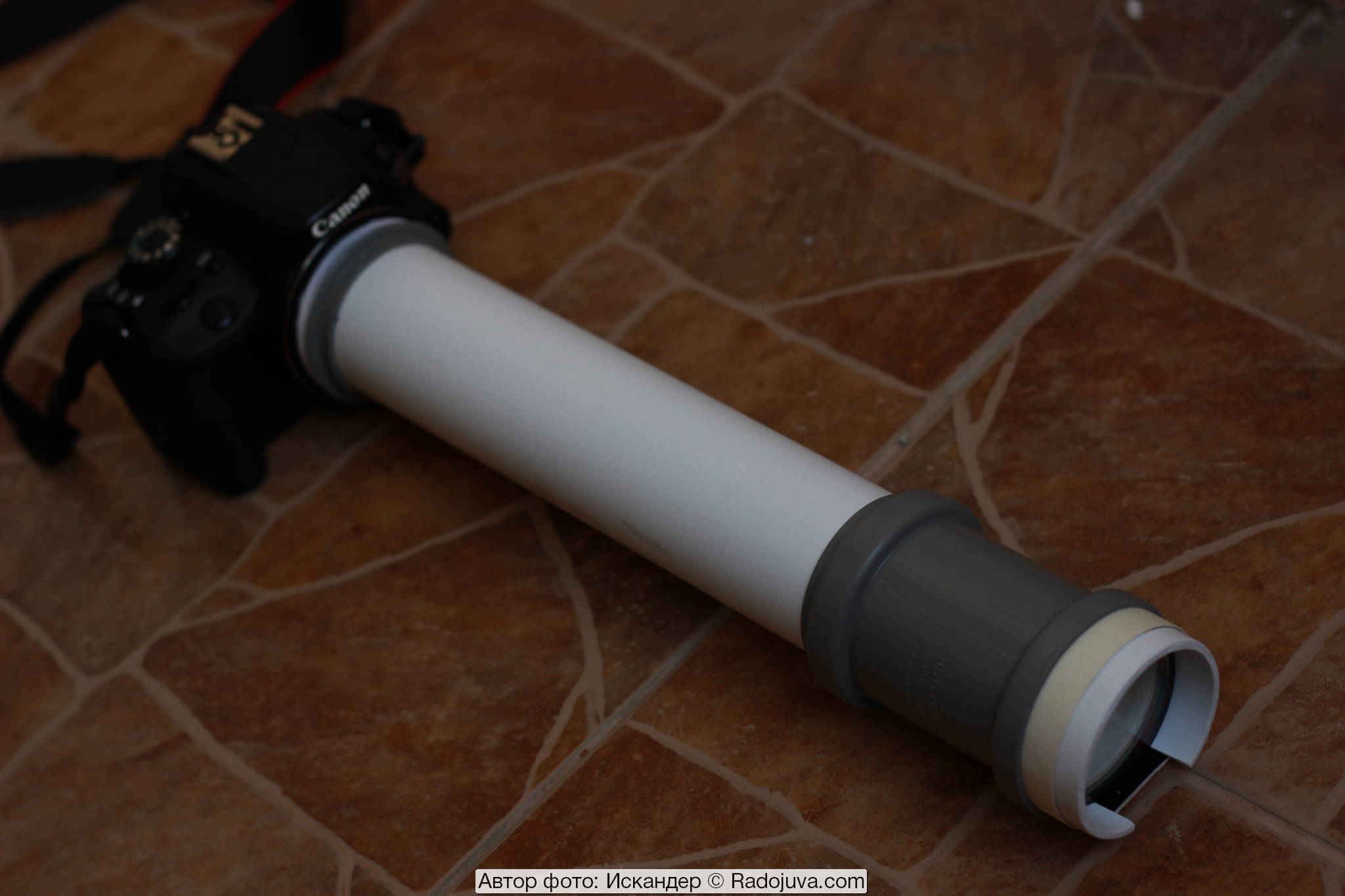
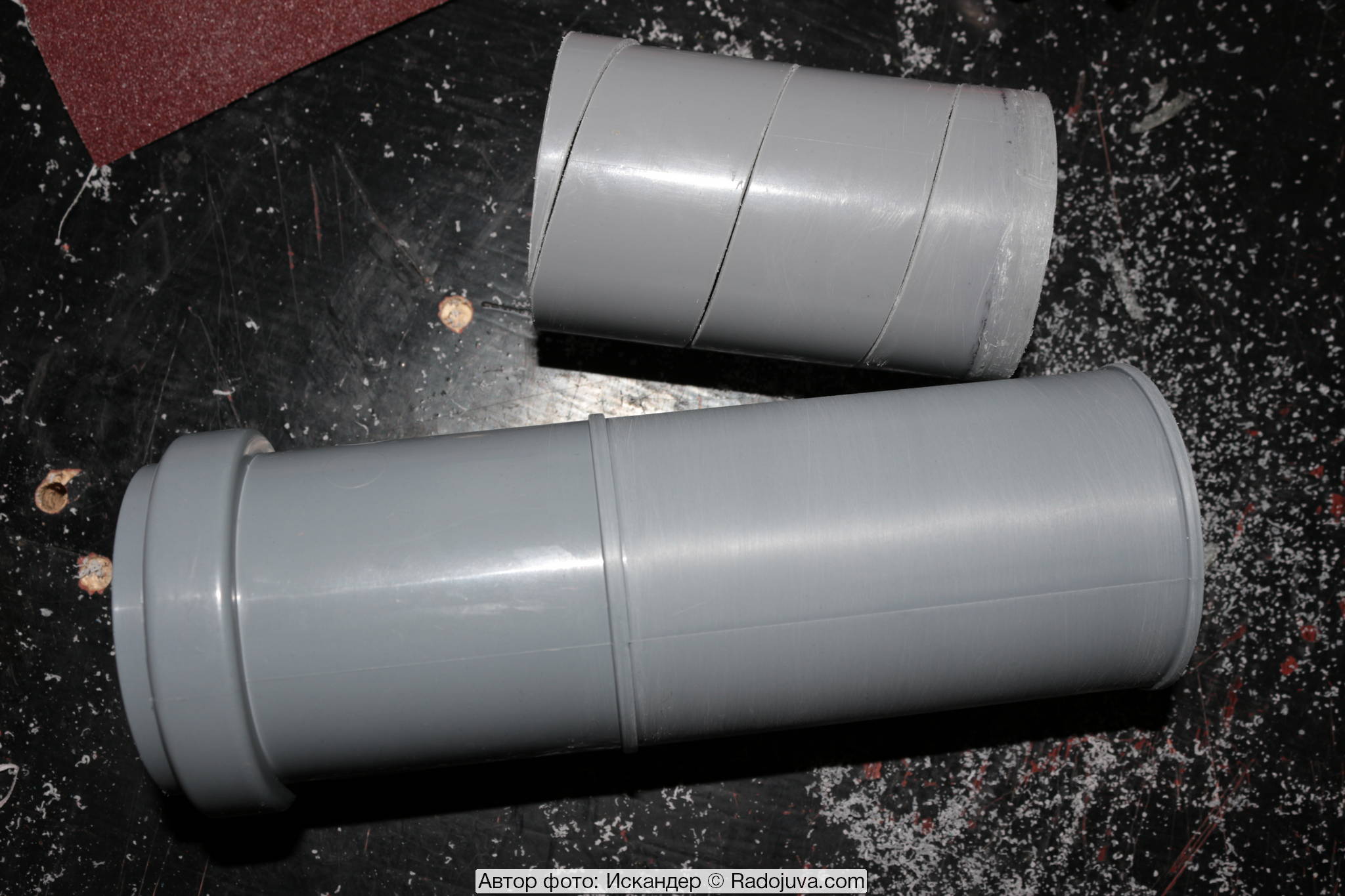
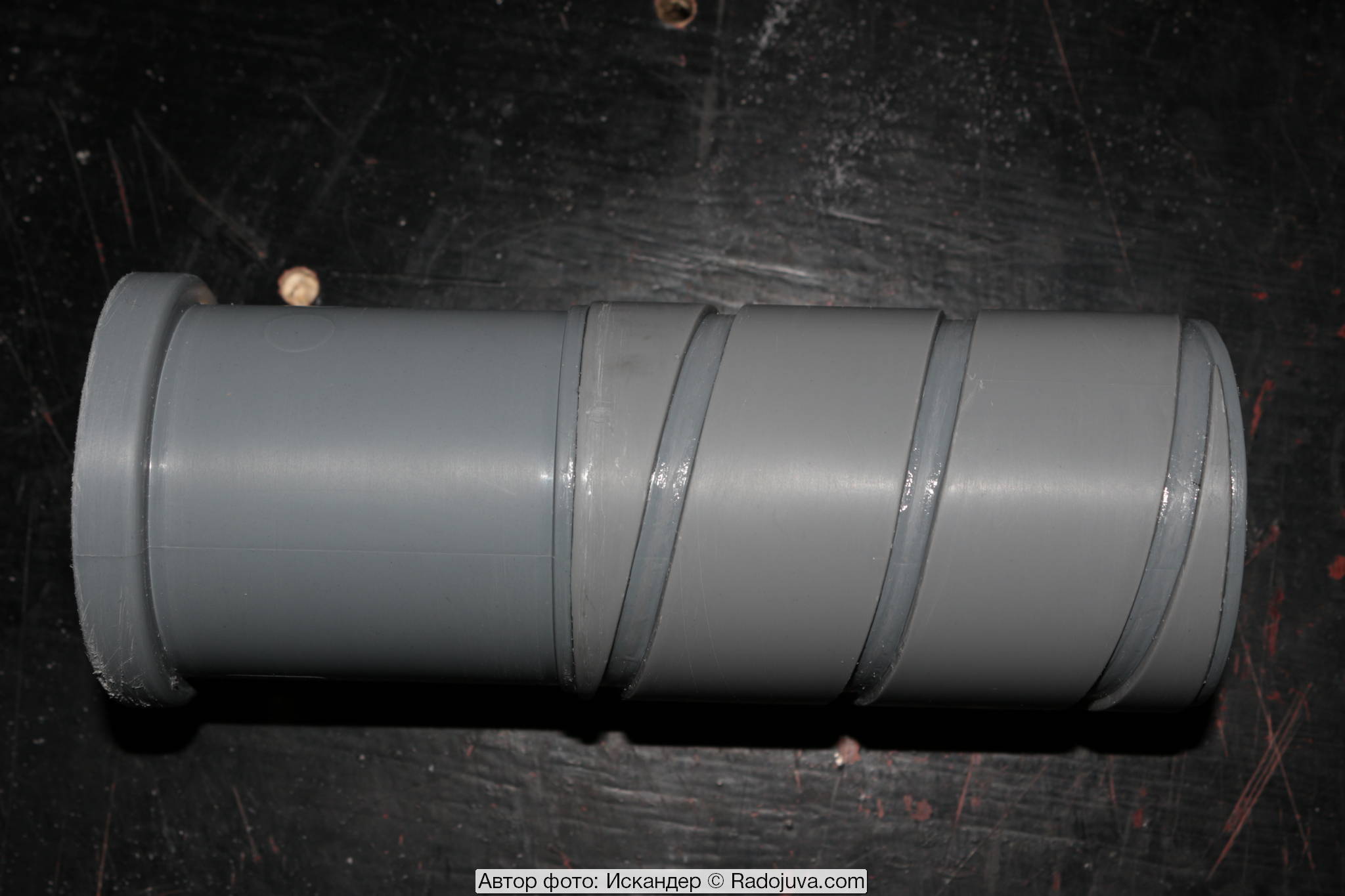
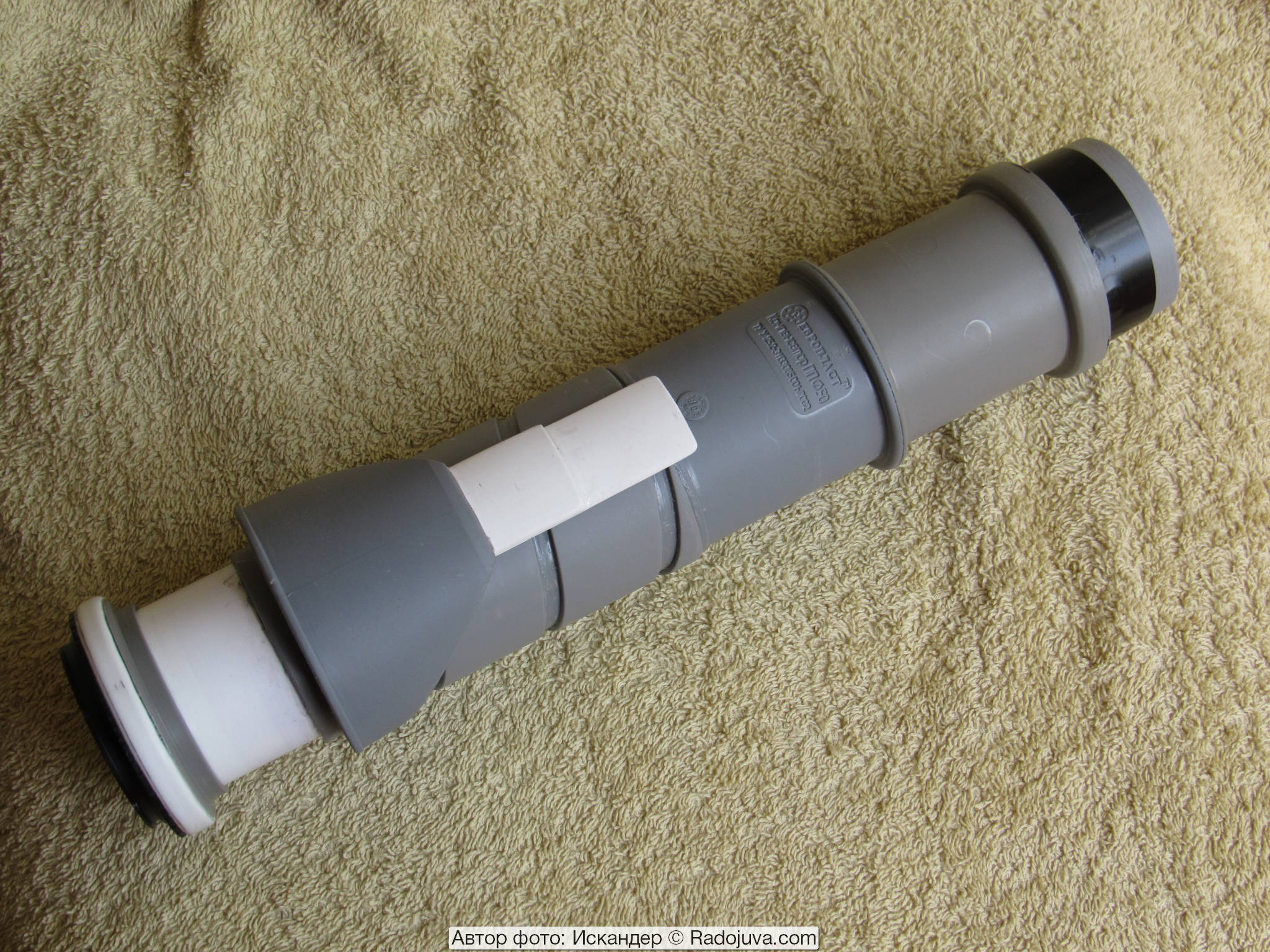
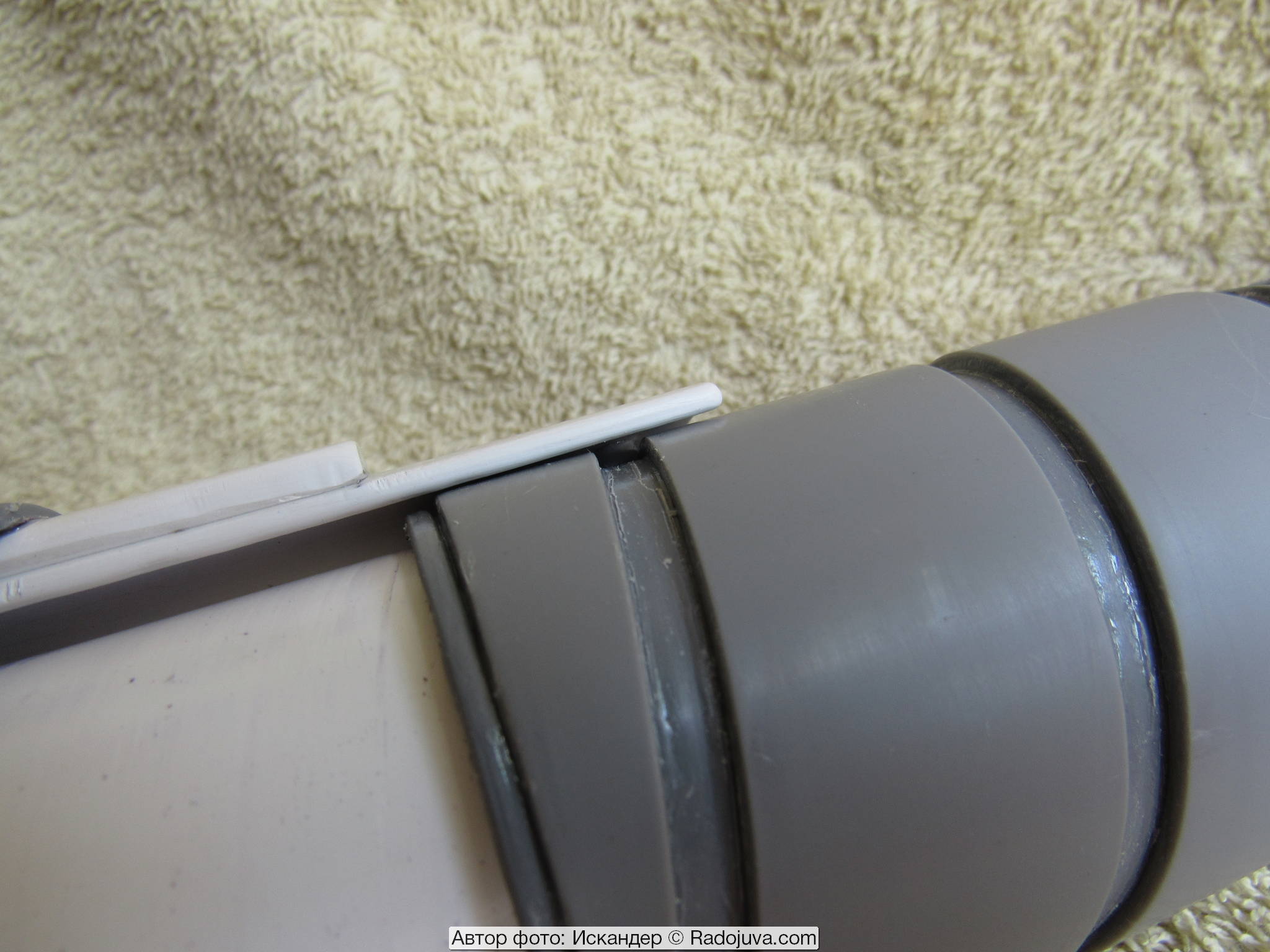
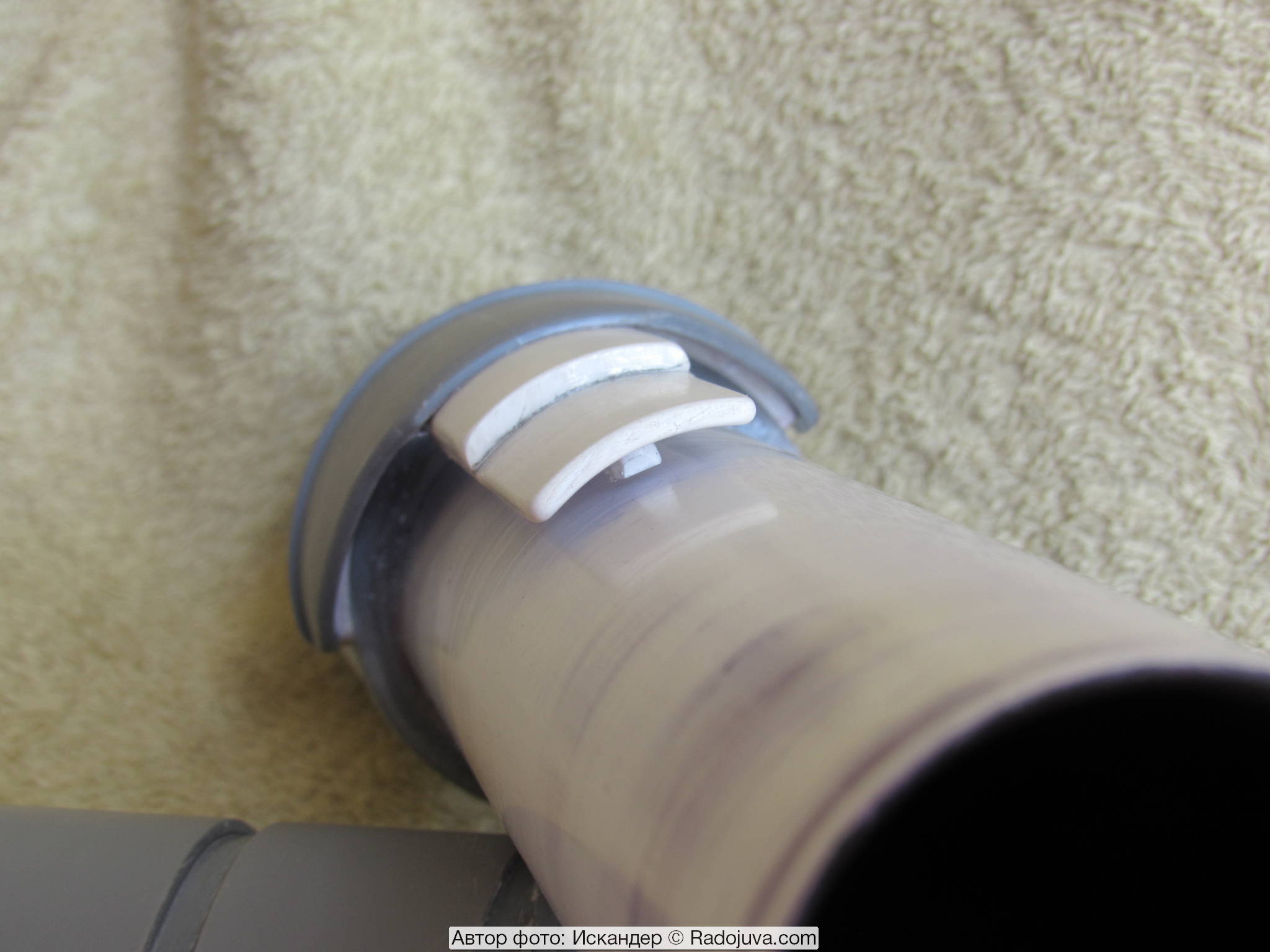
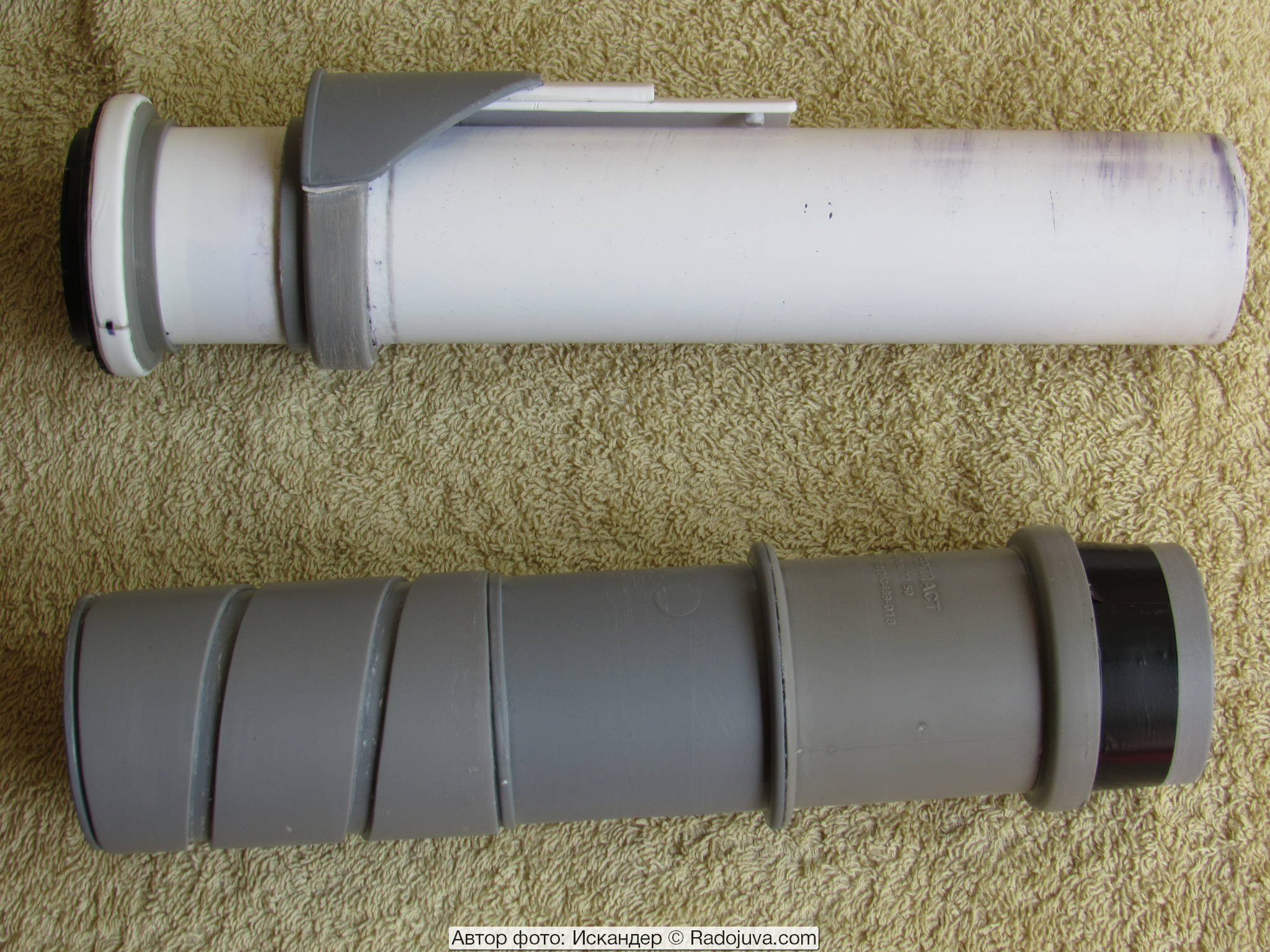
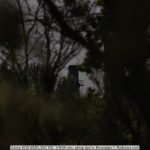
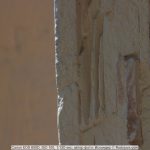










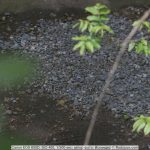
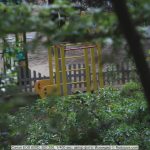

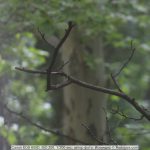

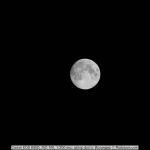


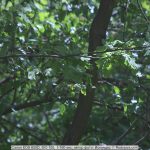

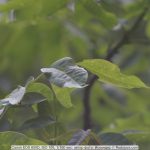


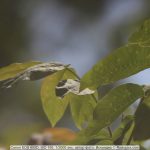

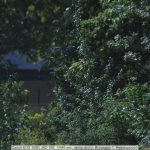
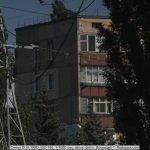
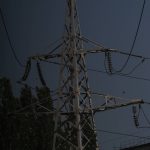
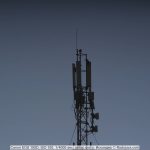
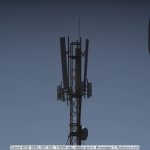
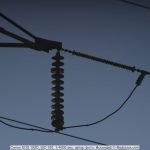
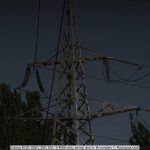
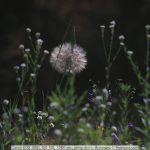
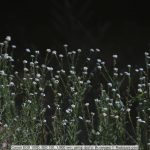



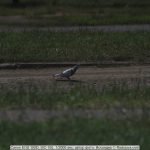

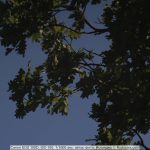
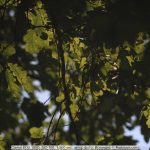

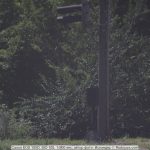
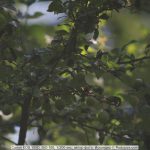










Well done! As I understand it, we will not see the photo of the neighbor next? :)
For blackening, you can use black velvet paper by gluing it from the inside. Even black plastic reflects light and reduces contrast.
There was such a thought. But velvet will collect dust, and it can get damp. Therefore, I limited myself to grinding the insides with a large sandpaper wound on the handle of the hammer, and painting)
No, guys, I'm not capable of such feats ... There is a small and light Tamron Adaptall-2 300 / 5,6 Macro - I shoot with it: https://psv4.userapi.com/c848328/u186682217/docs/d17/47d1c87d6aeb/IMG_0059.jpg?extra=aZln6dWeDoi_sW65C_PDxi361A69qz6rjANFpmmQHgc0L_JY2mLZ6Ej78YI73-xAv-0Aj6280L0NuSdSkXu4KUlLqZVsZF5FEqhcZwOIzs4Am2fK3Gt7KQAuvYcmY7NUaoVuziCPBBHEd-qoOGD9oS1L
But respect to the author!
Some people like to buy, others like to create. Besides, if a thing is lying idle, why not adapt it somewhere. There is a lot of free time in retirement)))
It looks like something like a 400/8 lens came out. I must say that CZJ Fernobjektiv 500/8, OKS 200/5 300/5 were also built on the basis of the simplest achromat. So with the proper level of performance, the idea is quite justified - with a low aperture ratio, achromats give good image quality.
And the hoods aren’t enough.
There is a hood, its role is played by the rim flange protruding 28 mm forward. You can make it longer, in the form of a bell, but it will only increase the dimensions.
But it's worth trying, especially with such a focal one. In the photo of the moon there is good contrast, in the daytime it is not.
Well, what just do not come up with cunning people, just not to buy a normal telescope with an adapter for the existing photographic equipment :-)))) ... but in general - witty!
330mm closer to a camera gun than a telescope. "Make smart faces")
Ivan, a good telescope is above my capabilities, but below my desires. Cheap Chinese I just looked outside, and gave up this venture. At astroforums, no matter how you ask a question, which seeker or guide, for example, will advise, so at first they will call a noob, sons, then they vyingly begin to advise THIS !!! and FOR THIS !!! prices, they say SUCH a bunch of incomprehensible brands, mechanisms, terms, and even with jargons, abbreviations that you want to unsubscribe according to your mother! And all srach comes down not to real optical characteristics, but to stupid consumerism ...
At astronomy.ru you can find inexpensive options for aperture achromats or Newtons for astrophoto. The problem is that without the equatorial of motorized blood you will be able to do this. And all Pribluda for astrophoto are worth some crazy money.
Visual observation is another matter. For these purposes, a 90/900 achromat is enough at a simple equatorial or automatic alt-azimuth.
Glancing at the headline, I thought that Rodionov’s work) Thanks Iskander for his dedicated work.
Wow!)
It remains to invent autofocus.
There was such a thought! Attach a motor, with a worm or screw or rack and pinion gear (like Tair-3), or by means of pulleys, blocks and cables to semi-automate the focusing process. Rummaging on sites, forums for photography and astrophotography, I realized that the manufacture of a helicoid or other type of mechanism is handicraft, without a qualified turner and milling cutter - a big problem for homemade people. I offered my own version.
Cool cool
Some people like to buy, others like to create. In addition, if a thing lies idle, why not adapt it somewhere. There is a lot of free time in retirement))). Although, to be honest, my Canon SX50HS 530x ultrazoom does better at these same tasks. It has bigger zoom and bigger macro and the stabilizer is just brutal!
No, he writes useless comments :-)))
I wonder what format it covers? Fullframe? Or maybe SF? It would be wildly funny to see this piece of sewer pipe attached to the brand new GFX x)
The M42-EOS adapter will cover the full frame, what do you think? Or is it only designed for crop? Send me a full-frame carcass by mail, I will try)
But seriously, similar achromats were used for astrophotography back in the film era, in 24 × 36mm format, on Zenits, when there was no such thing as crop yet, and everything was okay! The field of view of such lenses is noticeably wider than the "full frame", that is, there is a margin. Another thing is the diameter of the through hole of the adapter, it can cut off the edges a little on large formats. I don’t know about SF, honestly, I was never interested. If you want to accurately calculate the useful field for such a lens, I recommend Sikoruk's book "Amateur Astrophotography". All the formulas are there.
What does it mean “when there was no such thing as“ crop ”yet” ???
In fact, initially they were shooting in 18x24 frames (across), and only then did “full-frame” cameras appear. And half-format (exactly what "crop") cameras were already when there were no "Zeniths" even in the plans.
then there was no concept of crop, but there were half-frame cameras that shot a frame across the film. Agate for example. I have such
Any almost) But the field of high-quality images is limited to a small format.
you are wrong ... why so rude and not about business ... for example, from the article I realized that the front block of 2 apo lenses is quite likely to be suitable for a macro attachment ....
Also an option! On my first Smena-8M camera, I used a macro lens with glasses with a focal length of about 500 mm, the minimum MDF was 200 mm (with the standard Change MDF 800 mm). For macro, a shorter focus lens, such as a binocular lens, is desirable. I may be wrong in the exact numbers, but it feels like something like that.
Generally yes, right. The vector is surprisingly successful. By the number of views on the pipe (also, by the way, a pipe if Che), the phones are ahead of the rest. Therefore, we successfully move to plumbing and so on.
I propose - shift from a vacuum hose. Why, it would be cool. Focal from 1000 for example encrypted. On the unit from Canon would be cool at all)
And what a macro would be with corrugation !!! Onion cells can be seen! Even atoms !!!
And what a good idea to post a video on TyTruba! So I see millions of money flocking to me!)))
That's right!)
Radozhiva has 5000 subscribers there, and you have corrugations and the whole Llard !!
I will be among the first 100)
Subscribers, vsmysle!
I need 2 lemons, no less). But seriously again, I just want to bring people ... happiness)
Tilt-shifts from a vacuum hose already Lensbaby stamps))))
Classics from toilet corrugations and Helios-44 actually)
Cool!
No, all the same in vain Arkady ruled out the possibility of putting plus / minus. How many smart and good thoughts do not find their approval ...
There is such an opportunity at the lance club, but smart and good thoughts do not survive there most often and for the sake of toxic trash. The last article there is about female contraception, for example.
Respect to the author for the witty design of a helicoid from plumbing pipes.
A slight blame for neglecting the blackening of the inner surfaces - the contrast will be better.
And Rodion had interesting material about the use of achromat from 8-times KOMZ binoculars. Focus 120 mm, aperture 4. And the picture there was more interesting, although inferior in terms of resolution on the edges.
Here a couple of my achromats also ran - a short one from Zenith's sighting glue and a long one with under-corrected SFA. They, perhaps, will be even funnier. The binoculars are still “correct” in comparison with them.
In Russia, even for samples of combat lasers, pipes for sewage are used.
https://lenta.ru/news/2018/03/25/kak_tebe_takoe_musk/
I dabbled in it myself. But having bought a relatively cheap Tamron 70-300 in the commission, I immediately realized how far I was, and in general let it go.
For the sake of 300 mm FR, there is no point in such a fence, it is not worth it. If 500 and above - then yes
If we talk about the essence of the design, then lens manufacturers almost never use such a telescopic construction, with long pipes. Since the dimensions are large and it is difficult to remove reflections from the tube. Basically, the imaginary image is first approximated by scattering lenses, then it is projected by collecting it in the desired proportion onto the matrix, not forgetting to align different distortions, like this.
Quite right. Strictly speaking, a telephoto lens is considered to be an objective with a large negative component in front and a positive one at some distance behind. The result is that the main optical plane of the system is brought forward and the length of the objective is noticeably shorter than the focal length. But such a system is more complicated and more expensive to manufacture than conventional gluing. Moreover, due to the air gap, the luminosity is slightly lost.
Long live the Spirit of Creation, flight of imagination and thought, symbiosis of knowledge and innovation! The world keeps on "Kulibins" !! Very touching in our lazy Time of commodity-money relations and the total domination of the Consumer Society! ..
Hands from the right places of course grow. But the photo is so-so. We have to admit it. Perhaps the moon.
Wonderful, Lord, thy deeds!
Well done, Iskander! Do not listen to anyone and do what you like, the main thing is the result! And let the "theoreticians" continue to grumble to themselves ...
Thanks for the good feedback! There is an idea to make an adaptation of Industar-96U with a similar helicoid, but not as described on this site, but inverted, with a bell forward, with the ability to shoot at infinity and in super-macro. I have two of these lenses lying around idle.
In this industry, you can swap the front and rear lenses and then it will even be installed correctly backwards.
It’s not just the right direction of the rays. There are several advantages at once: the bell will serve as a hood; it will be possible to focus on infinity even on SLRs; also (I already figured out the sketch) there will be more progress when focusing on the macro; there is no need to blacken the outer tube, since the nose of the lens goes deep into it.
I mean, if you turn it over just like that, the image quality will be low - checked.
These are the times! Indeed, in a photographic enlarger, it stands exactly like this - with a carving to an object (film), a nose to an image on photographic paper. After all, it is logical!
So everything is logical: the work of a photographic enlarger is a projection from film onto photographic paper.